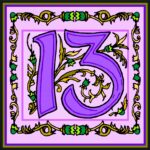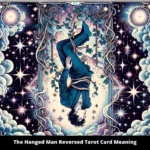In the intricate realm of divination, tarot card reading has emerged as a captivating practice that promises not merely insight but a profound shift in perspective. Each tarot reading possesses a tapestry of meaning, inviting individuals to traverse the labyrinth of their thoughts and feelings. Delving into the arcane knowledge encapsulated within each card, we can unveil the mysteries that shape our lives, relationships, and futures.
The tarot deck is typically composed of 78 cards, bifurcated into two distinct sections: the Major Arcana and the Minor Arcana. The Major Arcana, encompassing 22 cards, embodies the overarching themes and significant life events that govern our journey. Each card represents pivotal archetypes that resonate deeply with the human experience, prompting reflection and contemplation.
Examples of these archetypes include The Fool, symbolizing new beginnings and the courage to embark on the unknown, and The Tower, which signifies upheaval and the necessity of transformation. The profound implications of these cards can transport the querent (the person seeking insight) to the epiphany of self-awareness, urging them to confront the realities they may be averting.
Conversely, the Minor Arcana comprises 56 cards, which are further divided into four suits: Cups, Swords, Wands, and Pentacles. Each suit correlates to different facets of life. Cups deal with emotions and relationships, Swords represent thoughts and conflicts, Wands embody action and creativity, while Pentacles pertain to material aspects and practical endeavors. Together, these cards form a nuanced narrative that paints a comprehensive picture of one’s current circumstances and potential trajectories.
The methodology employed in a tarot reading often involves the selection of cards from the shuffled deck. Different layouts or spreads, such as the three-card spread or the Celtic Cross, can evoke insights ranging from immediate situations to long-term outcomes. As each card is drawn, the interpretation evolves, taking into account its position within the spread, its orientation (upright or reversed), and its relationship to adjacent cards.
Curiosity piques as one contemplates the meanings behind reversed cards. Typically viewed as omens of challenge, they invite the querent to examine their internal struggles and areas of resistance. For instance, the reversed Six of Cups may suggest nostalgia but warns against clinging to past experiences that hinder growth. Such revelations can be transformative, offering opportunities for introspection and personal evolution.
A pivotal aspect of tarot reading lies in its ability to elicit a response wrought with emotional depth. It is an invitation to explore not only the external circumstances but also the inner dialogue that governs one’s decisions. This multifaceted approach encourages a holistic view of situations, fostering an understanding that transcends mere analysis. A querent may discern patterns in their choices, inviting them to break free from negative cycles and embrace a more empowered narrative.
The inherent ambiguity of tarot prompts individuals to confront their assumptions and beliefs. Each card acts as a mirror reflecting the querent’s mindscape, providing a canvas upon which they can project their hopes, fears, and aspirations. This intrinsic connection between the cards and personal experiences cultivates a resonance that amplifies curiosity about the self and the greater universe.
As one delves deeper into the symbolism of the tarot, they encounter the richness of its archetypes. The imagery captured within each card is often laden with esoteric significance. The Empress, with her lush surroundings and abundance, beckons the querent to explore themes of fertility, creativity, and nurturing energies. Conversely, The Hanged Man offers a stark contrast; he hangs suspended, urging surrender and perspective-shifting, illustrating the wisdom in pausing to reassess a situation.
The desirability of tarot reading stems not only from its investigatory prowess but also from its capacity to empower. The act of seeking guidance and understanding proves transformative in its own right. By engaging with the tarot, individuals are encouraged to take agency over their lives, aligning an awareness of their circumstances with actionable steps toward fulfillment.
Moreover, the act of doing a tarot reading can be a ritualistic affair, invoking a sense of reverence and connection to the metaphysical forces at play. Whether performed alone or in a collective setting, the atmosphere can be charged with intent and spirit, amplifying the effects of the reading itself. This shared experience fosters a sense of community, binding participants in their quest for understanding and clarity.
Just as the tides ebb and flow, so too do the insights gleaned from tarot readings. An individual may leave a session with a renewed perspective, yet it is essential to remember that the journey does not end there. The interpretations drawn from the cards can unfold over time, revealing layers of meaning that adapt as life progresses. This dynamic quality is part of what makes tarot a compelling tool for reflection; the cards seem to evolve alongside the querent’s journey, constantly inviting them to further explore their life’s narrative.
In summation, the art of tarot card reading transcends simple divination; it is a profound exploration of the self and the myriad possibilities that lie ahead. With each card drawn, individuals are beckoned to examine their lives through a fresh lens, engaging in a dialogue that nurtures curiosity and introspection. Ultimately, tarot offers a unique pathway to self-discovery, encouraging seekers to traverse the expansive landscape of their existence with a deepened understanding and a pulse of possibility.








Leave a Comment